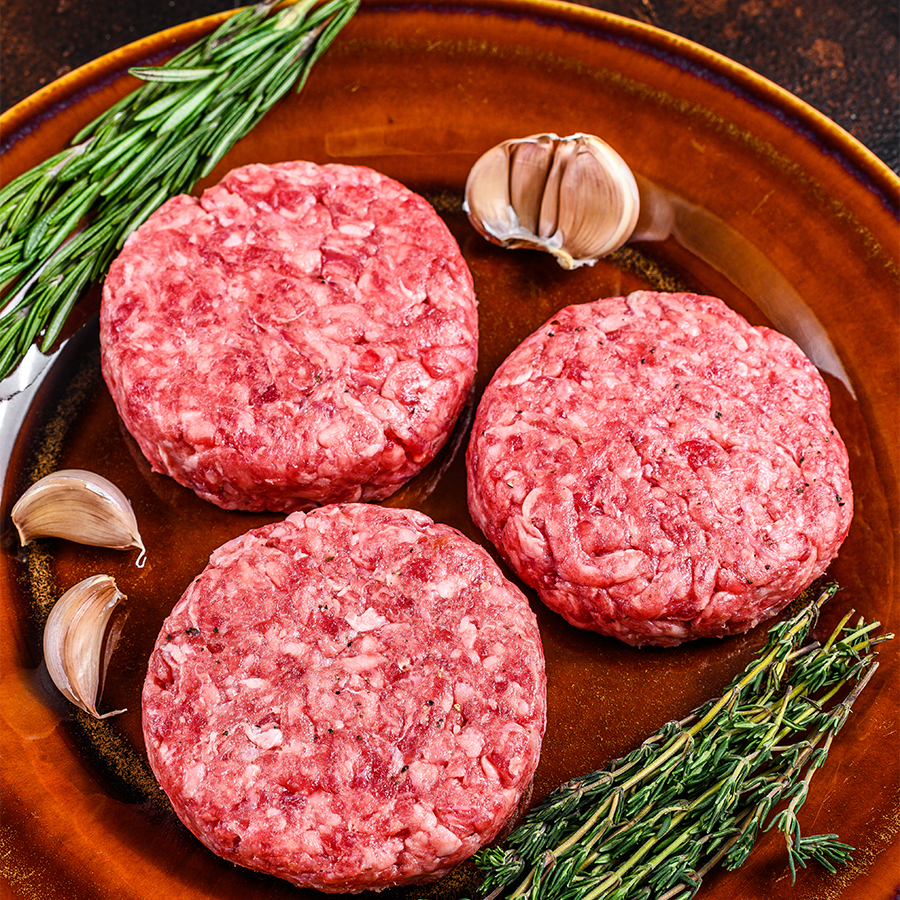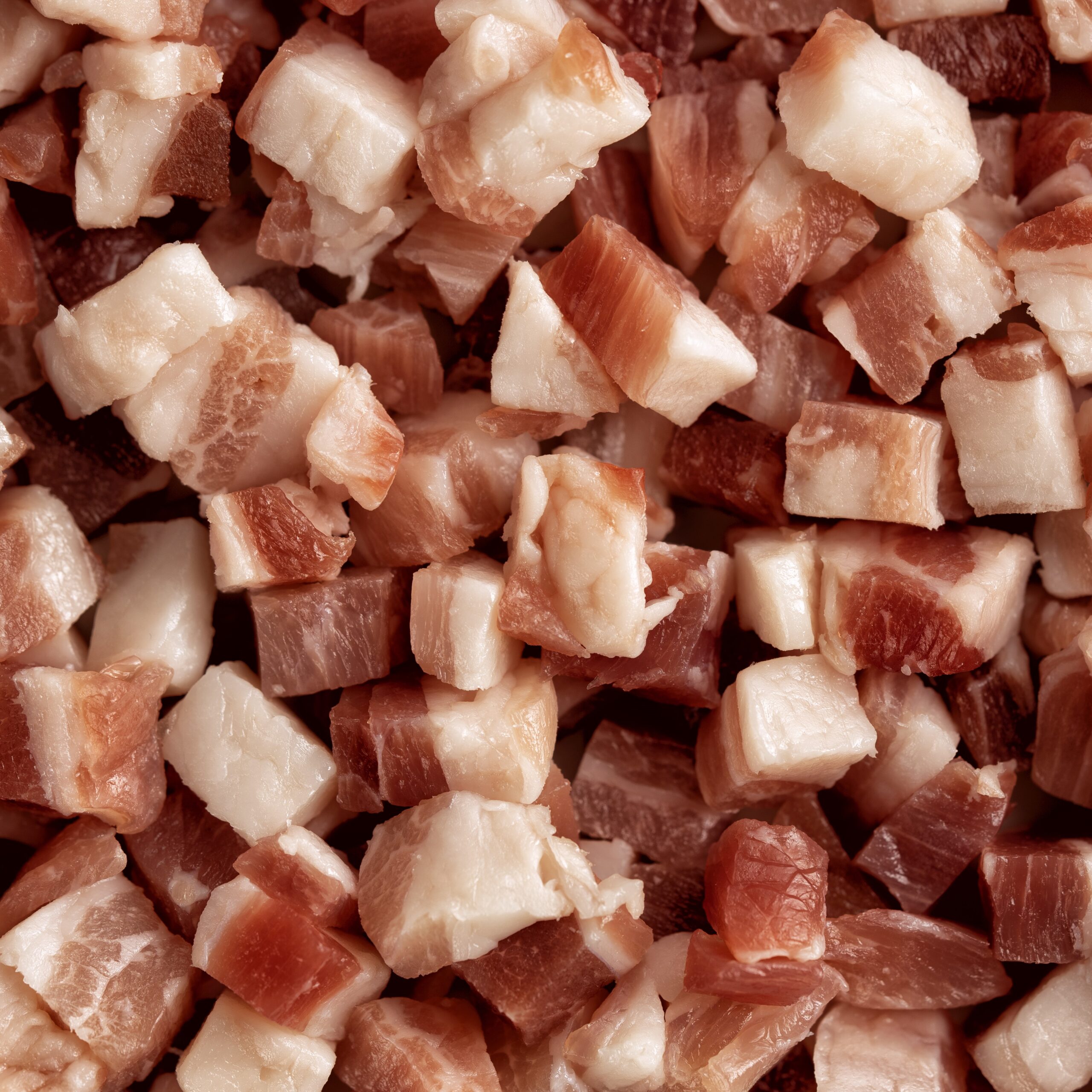Your monthly update on the state of the pork, poultry, beef, and seafood industries, direct from your Y. Hata category specialists.
Beef
Despite strong pushback from the foodservice segment, persistent retail demand is supporting high beef prices.
Live cattle prices paid by beef packers are at record levels, which is driving up raw material costs.
With high cattle costs, beef companies continue to lose money and are cutting back kills at the plant to minimize their losses.
Heading into the summer grilling months, availability of certain beef cuts will be an issue with packers reducing slaughter levels.
Heavier cattle carcass weights continue to help offset the reduced cattle supply.
With cattle being on feed longer, grading for choice, premium, and prime should remain strong for the foreseeable future. Availability for lower grades such as select continues to be limited, which has led to higher prices.
- Ground beef pricing will increase as we approach the summer months when seasonal demand surges. Additionally, export markets in Brazil, New Zealand, & Australia from which the U.S. heavily imports lean trim from will be affected by the looming impact of tariffs.
- Ribeye pricing has been increasing significantly with the Easter holiday past us and the summer grilling months approaching.
- Striploin pricing has remained at elevated levels as retailers have continued to feature this in their ad features.
- Chuck flat pricing has decreased significantly in April due to reduced demand from the high beef prices. In May, prices will be declining further due to softness in Asian export markets.
- Chuck Roll pricing has been trending downward, but prices could increase should the availability of lean trim lead to end cuts being used to fill grind demand.
- Sliced beef short rib pricing continues to remain at elevated levels due to limited availability of raw material.
- Oxtail prices have been increasing slightly due to the limited cattle supplies.
Despite high beef prices and inflationary pressure, beef demand remains strong amongst consumers.
With tight cattle supplies and continued strong consumer demand, beef prices will remain elevated as we approach the summer months.

Poultry
HPAI bird flu remains an ongoing area of concern for poultry producers but the impact on availability subsided in March.
Lighter live bird weights continue to be an issue, but producers are hopeful that the onset of the warmer summer months will lead to heavier weights.
Despite growing discussions surrounding vaccinations, the poultry industry remains reluctant due to the negative impact for producers exporting overseas.
Overall demand for chicken remains strong and consistent with increased prices across the board for almost all chicken meat parts.
- BI Thighs – Availability for BI Thighs continues to be limited as retailers continue to feature poultry heavily.
- BL SL Thighs – BL SL Thigh prices continue to increase due to higher demand and lighter live bird weights affecting chicken supplies. Additionally, high breast meat prices have led to demand shifting more heavily to dark meat.
- Legmeat – Chicken leg meat pricing remains at elevated levels and has been further supported by shifting demand from breast meat.
- Breastmeat – Breast meat remains the costliest of all chicken parts but is under pressure as retailers look to feature dark meat more prominently for their summer grilling ads.
- Wings – Wing prices have decreased and are the only chicken part showing softness. However, prices are poised to start creeping up as seasonal demand increases for the summer months.
- Turkey – Turkey prices are trending upward due to reduced availability and steady demand. For the remainder of the year, we should expect higher prices due to the reduced turkey supply.
Poultry Outlook – With high beef prices, poultry remains the preeminent protein of choice for consumers seeking value and affordability. However, the chicken industry is facing uncertainty given the potential impact of tariffs to key export markets.

Pork
With high beef and chicken prices, pork remains the best value for both the retail and food service segments.
Despite strong export and domestic demand, there remains a more than adequate inventory of hogs in the supply chain.
With the EU (European Union) not producing excess pork for export due to burdensome regulatory requirements, the U.S. has filled the void to other export markets.
- Butts– Boneless butt prices are showing softness with reduced export bookings to Japan and South Korea.
- Hams– Ham demand remains strong as the talk of tariffs have not negatively impacted exports to Mexico. Post Easter, domestic demand is also expected to increase.
- Back Ribs & Spare Ribs- Rib prices have been on the rise as retailers have been featuring both spare & back ribs more prominently for their grilling ads.
- Bellies- Stronger domestic belly demand has been supporting higher prices. For bellies imported from Europe, higher prices are expected due to the impact of tariffs and reduced pork availability in Europe.
Pork Outlook – With high beef prices and rising poultry demand, pork demand is poised to increase due to stable pricing and ample supply.

Seafood
Snow Crab (Opilio)
- Based on the USMCA (United States – Mexico – Canada Agreement), Canadian Snow Crab is exempt from any tariffs.
- Southern Gulf is currently about 75% complete. There are some boats that have completed their quotas and transitioning to lobster fishing.
- Newfoundland is about 3 weeks into their season. Currently about 25% of the quota has been caught.
Dungeness Crab
- Expect prices to remain high and supply will be a challenge.
- California has closed crabbing from Monterey Bay and all areas south to protect Humpback Whales.
- The live market will consume most of the Pacific Northwest catch.
- Next large season will be the Alaskan Summer Season which will begin in June.
Mahi Mahi
- Peruvian Season is completed, down about 80% compared to last season.
- Indonesia is now fishing for Mahi. Catches have been slow, and the fish are small.
- Taiwan is set to begin late April or early May.
- Prices are starting to increase across all cuts.
- Indonesia Tariffs are currently 10%. Once the 90-day pause is over, it could climb to 32%.
Vannmei White Shrimp (India)
- Harvesting has begun slowly, majority of the harvesting will not commence until sometime in May.
- Current Tariffs are set at 10%. After the 90 day pause, we could see tariffs climb as high as 26%.
- All importers have started to raise their prices to account for at least the current 10% tariffs.
- Expect pricing to rise in the coming weeks.

